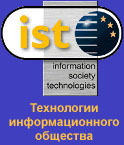
|
Microwave and Low Frequency Noise Spectroscopy of Two-Dimensional Electron Gas Channels
-
PROJECT NUMBER
-
CP94-1180
-
RESULTS NOISE
-
Microwave and Low Frequency Noise Spectroscopy of Two-Dimensional Electron Gas Channels
-
PROJECT TITLE
-
NOISE - NOISE OPTIMISATION OF HIGH-FREQUENCY SEMICONDUCTOR STRUCTURES
-
PARTICIPANTS
-
|
*Germany
|
TECHNISHE HOCHSCHULE DARMSTADT
|
Coordinator
|
|
|
RHEINISCH-WESTFAELISCHE TECHNISCHE HOCHSCHULE AACHEN
|
Partner
|
|
*Hungary
|
RESEARCH INSTITUTE FOR TECHNICAL PHYSICS
|
Partner
|
|
*Lithuania
|
SEMICONDUCTOR PHYSICS INSTITUTE
|
Partner
|
|
*Poland
|
INSTITUTE OF ELECTRONIC MATERIALS TECHNOLOGY
|
Partner
|
|
*Russian Federation
|
A.F. IOFFE PHYSICAL TECHNICAL INSTITUTE
|
Partner
|
-
ABSTRACT
-
Combined with response measurements and Monte Carlo simulation, the NOISE spectroscopy is a tool for optimisation of NOISE-speed performance of HFET (Heterostructure Field Effect Transistor) channels, ensuring quality control and feedback to epitaxial technology and miniaturisation for new generation of low-noise microwave devices.
-
KEYWORDS
-
Miniaturisation
Quality control
Simulation
-
DOMAIN
-
Esprit domain Technologies for components and subsystems
-
SUMMARY
-
Equivalent noise temperature and spectral density of current (voltage) fluctuation is measured on test structures and transistors to determine dependence of noise spectra on band structure, doping level, electric field strength, channel length and ambient temperature at frequencies ranging from 10-1 to 1010 Hz. Together with traditional sources of excess noise resulting from 1/f fluctuations, generation-recombination transitions, and intervalley transfer of hot electrons, the sources specific to two-dimensional electron gas - intrasub and intersub and real-space transfer transverse tunneling - have been resolved.
The Hooge parameter is determined for Al-free and Al-containing, lattice-matched and strained, InP-based InGaAs 2DEG channels, the lowest value reaching 1.5 10-5.. Activation energies of traps located in heterojunction channels are determined from generation-recombination noise spectra measured at intermediate/high frequencies and different ambient temperatures. At microwave frequencies, hot electron real-space transfer noise is resolved in AlGaAs/GaAs, AlInAs/InGaAs/AlInAs and InP/InGaAs/InP channels, the associated time constant is found to exceed few picoseconds.
Transverse tunneling time constant determined from noise measurement for AlGaAs/GaAs/AlAs/GaAs is 10-15 ps. The shortest time constant determined from noise spectroscopy data is 30-60 fs for intervalley Gamma-X transfer in GaAs.
The developed method of NOISE spectroscopy has shown itself to be a powerful tool for studying kinetic processes in quantum well structures, and for improving speed-noise tradeoff and response characteristics of heterostructures designed for low-noise microwave electronics.
-
BUSINESS OPPORTUNITIES
-
NOISE spectroscopy is becoming a useful technique for a laboratory involved in R&D of new-generation high-quality microwave devices.
The technique provides information on noise sources and associated kinetic processes in heterostructures containing quantum well channels.
-
TECHNICAL PERSPECTIVE
-
The technique has made it possible to determine time constants of fast and ultra-fast kinetic processes in conducting channels, difficult to extract from standard response measurements. In contrast to the traditional extrapolation of fluctuation-dissipation theorem beyond limits its applicability, the approach provides a correct estimate of noise characteristics under strong deviations from thermal equilibrium specific for high speed devices.
-
CURRENT APPLICATIONS
-
NOISE has been tested and developed by the partners. The next phase is the widest possible dissemination of the results and their take up by others.
Please see the list of papers for an ample overview of relevant information and material.
-
TERMS AND CONDITIONS
-
FOR MORE INFORMATION CONTACT:
Prof. Dr. Hab. Arvydas Matulionis.
Semiconductor Physics Institute.
A. Goštauto 11.
Vilnius.
Lithuania.
2600.
Tel: 370 2 618101 , Fax 370 2 627123 , E-mail matulionis@uj.pfi.Lt
|
 © European Communities, 1998
© European Communities, 1998
|











 © European Communities, 1998
© European Communities, 1998